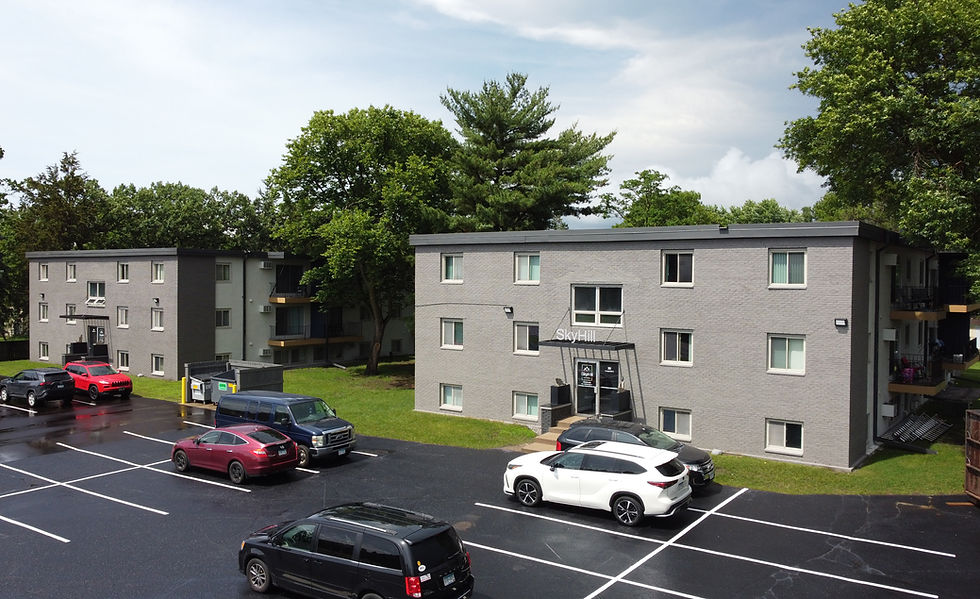Higher Rates For Longer : The bull & the bear case for multifamily over the next 2 years
- Ridgeview Property Group

- Oct 6, 2023
- 4 min read
Updated: Jan 7

The Ridgeview Report
All real estate sectors are currently navigating through challenging waters as the debt market exerts downward pressure on property values. Interest rates, once comfortably around the 3% range, have now increased upwards of 7+%.
For multifamily assets with long-term debt, operating fundamentals remain strong. In most markets, rent growth remains strong and expense growth has stayed manageable.
The question is, how will the next 2 years play out if rates remain high? Let’s analyze both the bull (optimistic) and bear (pessimistic) cases:
Bull Case - “Multifamily Remains Resilient”
Unprecedented Investment Appetite Continues
Higher interest rates lead to far fewer transactions, however so much capital is chasing multifamily deals that distress remains rare. Owners in trouble find that lenders are willing and able to offer restructuring (we call this “Extend and Pretend”), and foreclosures are infrequent.
Diverse Capital Sources Means No Lack of Funding
Investors across all income brackets pour capital into multifamily properties thanks to syndications, REITs, and crowdfunding. Multifamily has never been more institutionally favored, and the buyer pool remains strong despite the elevated interest rates.
Capital Flight From Other Sectors To Multifamily
Amid a tough economic climate, sectors like office and hospitality lose some of their allure, prompting a flight of capital into multifamily. Industrial real estate remains robust, but supply has increased dramatically due to the low barriers to build.
Decreasing Home Affordability Keeps Rents Strong
Interest rates at 7% make renting increasingly appealing compared to homeownership. Prospective homebuyers are opting to stay renters due to these interest rate hikes, reinforcing the strength of the rental market as a cost-effective alternative to buying a home. Rent vs. Own 2023 As previously underway multifamily projects reach completion, this larger renter pool helps them reach full occupancy according to schedule.
Bear Case - Distress On The Horizon
Fundamentals Erode
Operating fundamentals weaken in the face of economic challenges, leading to a decline in rents across the board. As tenants look to save money, some may choose to pair up or move back in with family members, impacting occupancy rates.
Supply Surge
Although development has slowed down tremendously, previously underway projects will flood the market in 2024 and 2025. This surge in supply slows down absorption rates, resulting in new developments sitting on a significant number of vacancies.
Debt Maturities Cause Distress
Interest rates remain elevated so long that a large number of multifamily properties reach their debt maturity while rates still remain elevated. Owners repeatedly have to choose between loan restructuring, cash-in refinancing, or even foreclosure.
Structural Challenges
Rapidly escalating insurance premiums and rising labor costs outpace rent increases. Additionally, capital expenditures (capex) and a difficult regulatory environment put additional pressure on property owners.
In Conclusion
It's essential to go through the exercise of analyzing all potential outcomes. Those who stay alert and adapt to changing conditions can find ways to thrive in shifting market environments.
Multifamily is the most sought-after real estate sector for a reason. It has demonstrated resilience time and time again. The high preference for multifamily investments, the diverse capital sources, and the flight of capital from other sectors into multifamily all testify to its enduring strength. Our optimism for the future is grounded by the fact that the multifamily sector has the unique potential to weather storms and thrive in evolving market conditions.
-Ben Michel
Ben Michel is the founder of Ridgeview Property Group, an investment firm specializing in acquiring multifamily real estate. Register Here to be notified of available investment opportunities.
Market News
Renting Vs Buying
The article titled "Rent vs. Own 2023" provides an analysis of the current housing market, with a notable emphasis on the fact that, in many parts of the United States, renting has emerged as a more cost-effective option compared to buying a home. The article attributes this to climbing interest rates and elevated home prices. The article cites that "Nationwide, the typical home costs 25% more to buy than to rent," which challenges the traditional belief that homeownership is always the financially prudent route. Instead, it highlights the growing trend where renting offers a cost-effective alternative, particularly in the face of rising housing expenses.
Source: Redfin News. There Are Only Four Major U.S. Metro Areas Where It’s Cheaper to Buy a Home Than Rent. https://www.redfin.com/news/rent-vs-own-2023/
Tips and Tricks
Terms:
Extend and Pretend - Also known as “kicking the can down the road,” the “Extend and Pretend” strategy is used by lenders in commercial real estate to defer risks or distress into the future. By refusing to write down distressed underwater mortgages and giving business borrowers extra time to repay their loans, banks “extend” their inevitable losses by “pretending” everything is fine and ignoring short-term valuations.
Crowdfunding - Crowdfunding is a fundraising method that leverages the power of the internet and social media to gather small contributions from a large number of individuals or investors to finance a project, business, or idea. It allows entrepreneurs to access capital without relying on traditional sources like banks or venture capitalists. Crowdfunding platforms provide a space for creators to showcase their projects, set funding goals, and offer incentives or rewards to backers, making it a popular way to raise funds for a wide range of initiatives.



